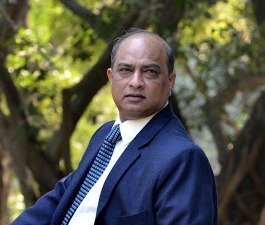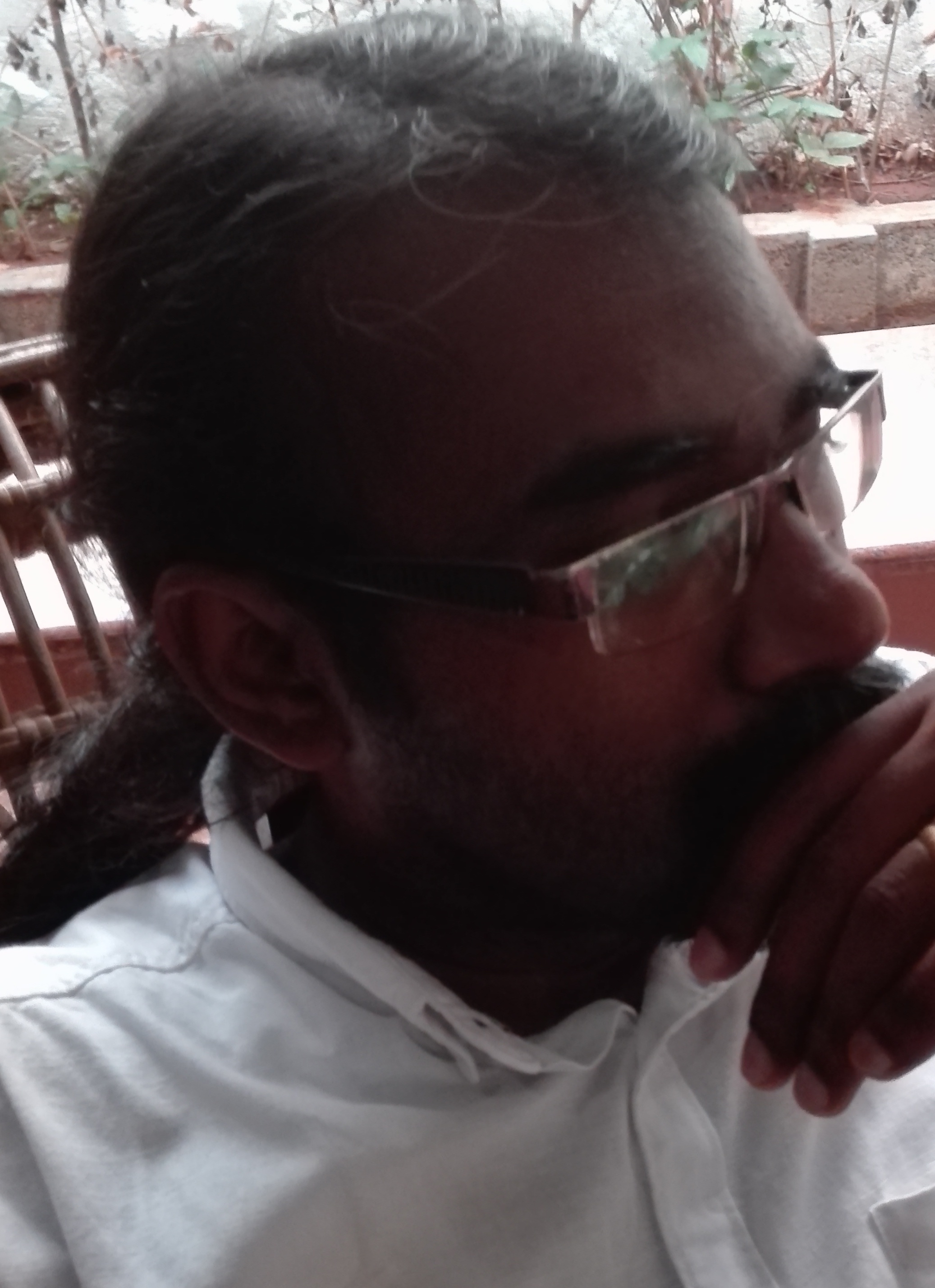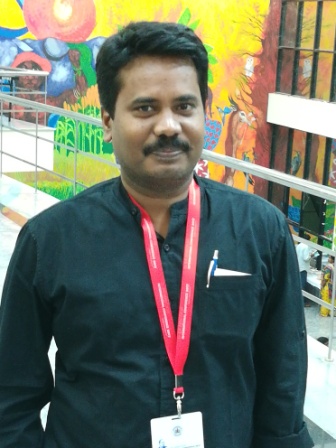Dalit Camera: Through Un-Touchable Eyes
Veteran political activist U. Sambashiva Rao was one of the key speakers at the ‘Democratic Debate on Appropriation of Ambedkar’s Writings’ held on 10th April 2014, in Hyderabad. U. Sambashiva Rao, who is Chairman of the BC Mahajana Sangham, has played an active part in many people’s movements – starting with ultra left Marxist-Leninist struggles to identity based agitations inspired by Ambedkar-Phule thought – in Andhra Pradesh over the last forty years. The following text features a part of his intervention at the debate:
{youtube}w5RtF5SRj_s{/youtube}
(Video features U. Sambashiva Rao’s speech in Telugu)
Non-dalits, whether they’re Reddies or Kammas or Brahmins or even BCs and Tribals..or Marxists who are not Ambedkarites or Socialists.. whoever it is, we will understand them by observing where they express their likes and dislikes.. Ilaiah garu says Arundhati Roy wrote as a liberal democrat and not as an Ambedkarite or a Marxist. If someone writes as a Marxist, we can understand that angst. Also, if someone writes as an Ambedkarite, we can see that anguish too. But here, what we see is not the angst, but a feeling – did she write this with the tactical objective, perhaps, of erasing the image that has been stamped on her community, I felt.
Here, I wish to differ with my friend, Ilaiah. It’s not a question of methodology. Even if this is a methodological approach, this methodological approach seems like the tactical approach of a liberal brahminical democrat. My assessment is this. The textual aspects, there are many – those who read it can understand and digest it – but here, I’d like to refer to the context, offer my observations along with the context in which she writes.
One, when we talk of context/background, unless I offer my explanation about the three phases or steps this context comprises of, we might not be able to understand the context of why Arundhati Roy wrote this book now, I feel. Perhaps, because we had journeyed through all the three phases, participating in people’s movements, we caught the scent immediately: on why this has happened now. To understand why this book has happened now, we need to understand why Arun Shourie’s book happened then. The reasons why Arun Shourie wrote that book only then and not earlier. That was also a historic moment/context. If we go back a little further, Ambedkar, who lost both his health and several years of his life working on the constitution, had once said that he had done donkey’s work to complete the job. But he was not awarded the Bharat Ratna then, even after making such huge sacrifices. He was not granted the honour even after he died. We will also have to understand when he was awarded the Bharat Ratna.
If we piece these three events together (only then shall we understand why Arundhati wrote this book now). If we look at the making of Gandhi into a Mahatma, the saint..to digress, when we talk of ‘The Doctor and the Saint’ and its translation into Telugu, to put it in a lighthearted manner, all one can say is that Ambedkar was a great social scientist while Gandhi was a mere sanyasi. Isn’t that the right translation, doesn’t saint mean a sanyasi?
The people at Andhra Jyothi probably thought that using the word ‘sanyasi’ may lead to readers thinking of him as a sannaasi (worthless person, in Telugu), therefore they changed it to ‘pravakta’ or prophet. They’re big interpreters too. They had received a message saying that this meeting was about to happen, we’re told. They called me up, trying to probe. They said, we have received a message, that a meeting was about to happen, but there were not enough details in the message to publish as a news report, is it true that you’re also participating in the meeting? So I said, yes.
Then they responded saying, why do you have to take a negative approach? Until now, whether they were Marxist brahminists or socialist brahminists or nationalist brahminists, they all remained brahminists, in your final analysis. As part of that you criticize Vara Vara Rao, you criticize Balagopal, you criticize Ranganayakamma, you criticize Arun Shourie..you criticize them all. But Arundhati Roy, even though she’s also a Brahmin, a Marxist, a Maoist sympathizer and a great liberal democrat.. and someone who protested against LPG, despite being all this she writes about Ambedkar, highlighting him positively, but why can’t you stand even that?
Therefore, they said, it would be good if you change this negative approach. If this meeting does happen, please don’t express this negative perspective there, they cautioned us through hints. But we know what that newspaper’s stand is, why they have these prophets there, they know better. That’s why I said, doesn’t ‘saint’ mean a ‘sanyasi’?
But what we learn from the views expressed through various signals by Andhra Jyothi is that: whether in the pre-independence or in the post independence period, no one from the upper castes ever looked at Ambedkar positively; Arundhati Roy is the first one to do so, therefore they’re hinting that we shouldn’t look at her negatively. I understood that in exactly the same way – I have been waiting all my life to see if what Ambedkar had once said would be falsified. He had said, the pope might become a revolutionary but the Indian Brahmin can’t ever become a revolutionary (‘if a man who becomes a Pope has no wish to become a revolutionary, a man who is born a Brahmin has much less desire to become a revolutionary’ – exact quote). Whether he’s a Marxist or a socialist or whatever ist..
We can’t fathom how much heartburn, what kind of experiences he must have gone through all his life to say that. I have been waiting, hoping, all my life to see if those words would ever be proven wrong. When I learnt Arundhati Roy had written this book I was hoping again that she would finally prove him wrong. Even she couldn’t prove his words wrong.
Therefore, I express my serious objections to this book. The tricks of brahminism, howsoever cleverly expressed, can never remain totally incomprehensible. That is why Mahatma Phule had said: a Brahmin is nothing but a bag of tricks. This is also a trick, a tactical trick.
Her books on tribal communities, their autonomy, rights and democracy are of high standards and have achieved great popularity, they say. That is a positive aspect to consider. But I feel, if the same issues had been raised by a BC or a Dalit or a Tribal, with the same clarity or with more clarity, with the same commitment or with more commitment, with the same spirit of sacrifice or courage – wouldn’t they be ‘encountered’ rather than gain such popularity?
I still nurse these doubts. I am not saying that if you belong to an upper caste in this country you should not talk about the tribals or the Dalits or the backwards or the poor. But caste is such a cunning system, and those castes which introduced this system in this society have not yet escaped from its framework. This book itself can be cited as conclusive evidence of that fact.
I’ll refer to 2-3 instances. A little while ago I’d said that to understand this book we need to understand the background of it in three steps. I repeat, my assessment is that this is a tactical methodological text. The references, the annotations and all the other information provided with the book seem to mock or indirectly deride (the original text) – all point towards this. This is the strand that we see running through the book.
The organizers of this event think that the title of the introduction is wrong, that it should be detached from the book because it is methodologically not right. They seem to be right, but if we look at it from another angle at this text as representing a liberal brahminical tactical approach..
Until now, if we look at Indian history, we see that their (Brahmins/Savarnas) revolutionary, democratic, positive, theoretical, philosophical contribution amounts to nothing. You will find nothing even if you search and search through a microscope. They might support original contributions of others, but you won’t find a single creative idea of theirs. Nowhere. Moreover, they become more famous than us by highlighting our contributions, contributions from dalit bahujan classes.
I’ll cite an example in support of this fact. She had analyzed tribal life; after she had done that, many people started praising her as a kind of authority on tribal life. Yes, she did offer some good analysis, but until the tribals themselves brought the issue of their autonomy and rights to the forefront, before anyone else – did any of us recognize it (their contribution) in this country?
Similarly, Ambedkar’s perspective is different from hers. Why did Ambedkar place the SCs and STs in the same category of reservations? Because he looked at it from the perspective of caste. Because the Dalits live outside the village and the tribals live outside the plains. Both are outsiders. So he attempted to see all those suffering from this kind of exclusion, to look at both of them from a single perspective.
In this country, if the tribals try to enter the caste society, the upper castes close their doors; but they don’t enter the lower caste homes even if their doors are opened. Therefore, Ambedkar said, as it is not possible to enter the larger society except through the door of caste, because caste acts as an obstacle, the Adivasi society has acquired this unique quality in India. Has any historian ever articulated those two observations? Does she talk about that? Does she say anything beyond what he said?
[Transcribed by Kuffir]
Please read the next part of this article here.
~
Please also read other articles on the same issue:
On how Arundhati Roy introduces AoC without losing her upper hand: by Murali Shanmugavelan
Introducing Arundhati Roy and Friends: by Karthik Navayan
A tale of two prefaces: by Karthick RM
Between Savior and Seller: Critiquing Preface Politics: by Praveena Thaali
A Glass Menagerie for the Bahujans—Annihilation of Caste and Gandhi’s Wards: by James Michael and Akshay Pathak
Stigmatizing Dalits, From the Wadas to the Web: by Nilesh Kumar
Without Arundhati Roy and Gandhi, the book had its own value: Bojja Tharakam
Caste in the Name of Christ: An angry note on the Syrian Christian Caste: by Nidhin Shobhana
The Not-So-Intimate Enemy: The Loss and Erasure of the Self Under Casteism: by Gee Imaan Semmalar
~
Flaunting noble intentions, nurturing caste privileges: by Asha Kowtal
~
The Question of Free Speech: by Vaibhav Wasnik
~
Arundhati Roy replies to Dalit Camera
~
An open letter to Arundhati Roy: by Dalit Camera
~
Vedic Chants for the 21st Century
~
Arundhati Roy’s “Introduction’ to Ambedkar: Inside one Misogynistic & Xenophobic Dalit’s mind: by Anoop Kumar
~
The Judge, the Jury and the Goddess: by Akshay Pathak
~
Resisting a Messiah : by Anoop Kumar
~
An Introduction to Anoop Kumar’s “Misogynistic and Xenophobic Rants”: by Vinay Bhat
~~~










